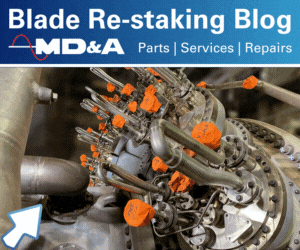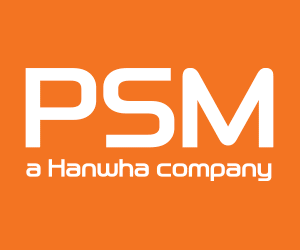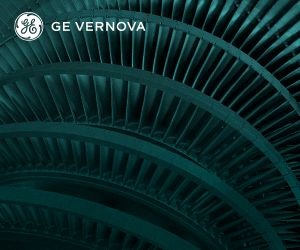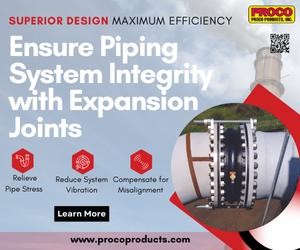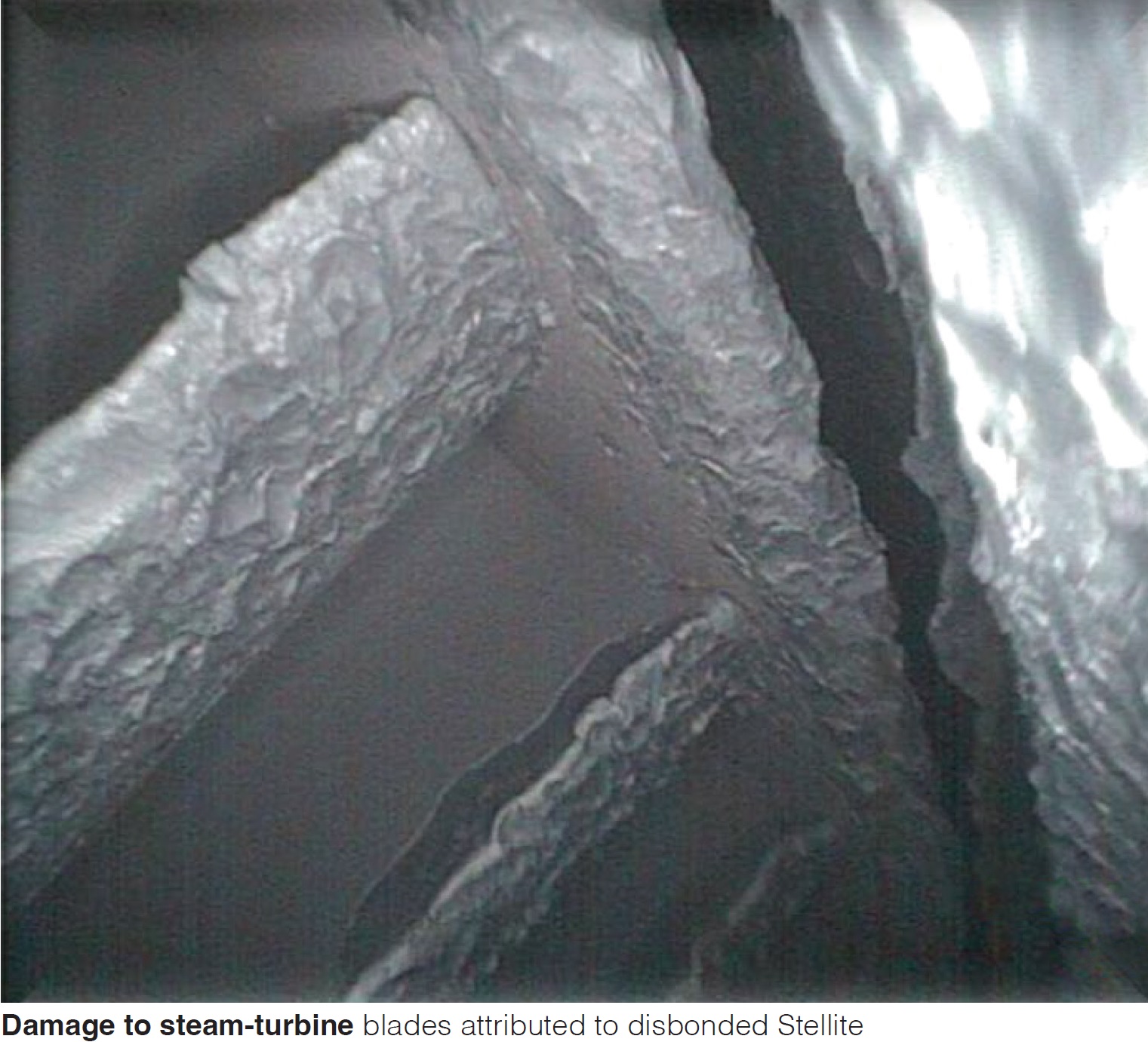 By Richard Laukam, ValvTechnologies LLC
By Richard Laukam, ValvTechnologies LLC
Steam stop valves, located at the boiler outlet, provide isolation. These typically are wedge-type gate valves, stop-check valves, or parallel-slide gate valves. Hardfacing often is applied to the seat and closing member (wedge, plug, or discs) to reduce wear and extend the duration of leak-free service. Hardfacing is the building up of high-hardness, wear-resistant metal onto a surface, using a welding process.
For steam, Alloy 6 and Alloy 21 (developed under Kennametal’s Stellite® brand) have been used extensively for hardfacing. Although Stellite® has been used successfully in a range of steam applications, the focus of this article is temperatures exceeding 1000F.
Widespread occurrences of failure in such cobalt-alloy hardfacings became evident after 2010. Valves manufactured from Grade 91 materials revealed subsurface cracking at the fusion line. Such interfacial cracking, also called “disbonding,” “liberation,” or “delamination,” can propagate where sections of the hardfacing detach (photo). Chunks of Alloy 6 hardfacing material have been found in the perforated screen of strainers in steam turbines.
Enjoy this classic CCJ article for a backgrounder on the electric-power industry’s experience with hardfacing.
After cobalt-alloy delamination became widespread, many power stations reported similar findings discovered in ultrasonic tests (UT), across valves in service for as little as 10,000 hours, but mostly approaching 80,000 operating hours.
Consequences became so severe that the Electric Power Research Institute (EPRI) established a program to investigate cobalt-alloy disbonding. Findings are presented in the table.
EPRI findings on cobalt-alloy disbonding
| Not a specific: | Observed in: |
| Valve supplier | Several manufacturers used Stellite |
| Valve type | Gate valves and Y-pattern stop-check valves |
| Valve-body fabrication | Cast steel (WC9 and C12A) and forged steel (F91) |
EPRI’s investigations focused on the metallurgical structure of the base metal and cobalt-alloy interface boundary layers. These boundary layers were found to contain a brittle intermetallic sigma phase, formed at the fusion line between the base metal and cobalt-alloy weld material.
This undesirable brittle phase forms over time during exposure to elevated temperature. Then during thermal cycling, cracks can initiate at these locations and propagate along the plane of the fusion line.
Keeping iron dilution below 10% and using a nickel-alloy 82 “butter” layer between the base metal and the cobalt-alloy hardfacing has been a big step forward. Time has shown this decelerates delamination but does not eliminate it completely.
Before reviewing technological advances, it is important to understand the basics. Engineers may ask for hardfacing, but what is really being asked for is a wear-resistant coating. Keep in mind the following:
- Hardness is a measure of a material’s resistance to permanent deformation (scratching, wear, galling or bending).
- Wear resistance is a material’s ability to resist material loss by mechanical action.
- Galling is the transfer of one material to another when the two are rubbed together.
- Toughness is a material’s ability to absorb energy and deform elastically and plastically, without fracturing.
A cobalt-free hard surface applied by a High-Velocity Oxygen Fuel (HVOF) coating process revolutionized the aerospace industry in the 1980s. HVOF is a deposition of layers of powdered material using thermal and kinetic energy, applied to the base-metal substrate. Such applications were developed for turbine blades (oxidation and corrosion), actuators and flaps (sliding wear), landing-gear components (wear and corrosion), and hydraulic systems (corrosion and erosion).
Manufacturers like ValvTechnologies, inspired by the aeronautical challenges of modern flight, developed a compressive spray technique. HVOF avoids the brittle intermetallic sigma-phase formation discussed earlier, providing a reliable bond to the base metal.
Structure, processing, and properties affect the performance of HVOF coatings. A hot, high-velocity gas jet sprays molten particles onto components. A mixture of powdered materials is forced through a spray-gun nozzle and ignited. The resulting gas forms a circular flame surrounding the powder, as it exits the nozzle, for uniform heating, melting, and acceleration.
This fuel and oxygen mixture atomizes within the combustion arc, creating high velocities, propelling particles at near supersonic speeds and producing an exhaust jet traveling at six times supersonic speed. Such high velocities, uniform heating, and low dwell time are contributing factors for dense, tightly bonded coatings.
Manufacturing techniques play an important role. Surface preparation is essential; for a successful coating, the substrate must be grit-blasted to create a slightly rough surface (anchor pattern) to provide the optimal surface finish to which the inbound powder will adhere. The surface also must be clean and free from contamination that could otherwise fill the pits.
HVOF requires a line of sight in relation to the area to be coated. In some cases, angles other than 90 deg achieve that line of sight. Machining, or better yet, horizontal grinding, is crucial to achieve fine finishes with highly parallel flatness.
Several types of HVOF coatings exist. Selecting the right one for valves depends on temperature, erosion, and/or corrosion. A versatile and high-performance version created for high-temperature steam, consists of 75% chromium carbide with a 25% nickel-chromium binder. The result, compared to weld hardfacing, is a much harder coating at elevated temperatures, and beneficial compressive residual stress.
Inspection of IsoTech® parallel-slide gate-valve components, after 10 years of cyclic service (2500 thermal cycles), proves that delamination is avoided, even with zero maintenance—an industry first for steam isolation valves. As the energy landscape evolves from baseload, to one of more frequent starts to complement renewables, combined-cycle powerplants are becoming more cyclic in nature. With significant thermal transients an emerging consequence, the criticality of selecting the best available hardfacing technology becomes clear.
Examples of 10-year-old components with chromium carbide coatings are intended to be forensically examined by EPRI, with any results likely to be published in 2025. It is hoped the expected outcome independently confirms that chromium-carbide coatings avoid delamination in high-temperature steam.
Given that more than half of the steam stop valves operating at over 1000F will experience disbonding within 100,000 operating hours, these advances in coating technology mean the industry can avoid financial consequences of damaged steam turbines, which can run into millions of dollars in repairs, and lost revenue.
 About the author
About the author
Richard Laukam is a highly respected industry expert at ValvTechnologies. A graduate of England’s Loughborough Univ with a Master of Engineering degree and a postgraduate certificate in management. Laukam is a member of the Institution of Engineering and Technology.



